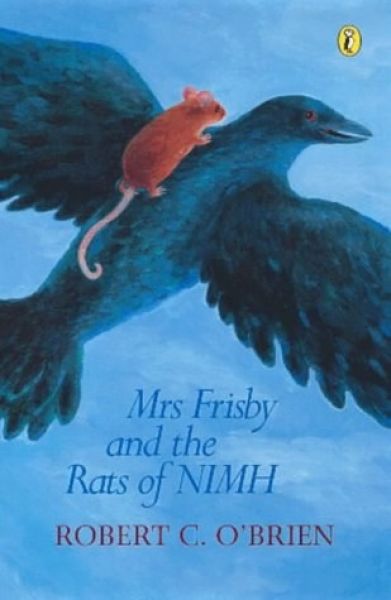Have You Brought Me Hope
Mrs. Frisby and the Rats of NIMH
By Robert C. O’Brien

18 May, 2019
Robert C. O’Brien’s 1971 Mrs. Frisby and the Rats of NIMH is a standalone children’s SF novel. O’Brien wrote no sequels.
Mrs. Frisby (a mouse) and her children (mice) have taken shelter in a cinder block near one of the fields owned by farmer Fitzgibbons. Winter is over and plowing season is approaching. The widow Frisby must move her children before a plow smashes into their home.
In previous years, Mrs. Frisby had no trouble relocating her family before plowing season. This year is different.
Little Timothy has pneumonia. He is recovering, but he won’t be strong enough to be moved before plowing season starts. The trek would kill Timothy — but staying put will doom him and his entire family.
Mrs. Frisby is unwilling to accept that Timothy must die if the rest of her family is to be saved. She braves the dangers of travel to beg her neighbours for advice and assistance. While scuttling along her way, she stops to save the life of a young crow named Jeremy. A grateful Jeremy gives Mrs. Frisby a lift and a bit of useful advice: consult the old owl in the nearby woods.
Mice are wary of attracting owlish attention. This mother mouse puts her life at risk to seek help. Happily for her, this owl is honorable and hospitable: he does not eat the delectable mouse on the spot.
At first, all he will tell her is that Timothy must die to save the rest of his family. But when he learns her name, the owl changes his tune. Mrs. Frisby’s late husband, Jonathan, had connections. The farm’s rats owe Jonathan and his family. Moreover, these very unusual rats might actually be able to help.
The rats and Jonathan had escaped from the National Institute of Mental Health, where they had been subjected to cutting-edge experiments that raised their IQ to human levels. Jonathan Frisby later died trying to sneak drugs into the food bowl of the farm’s cat, Dragon. He did this at the request of the rats and so earned their gratitude.
The rats can and will help Mrs. Frisby. But first someone has to drug the cat. The rats are too big and slow to do this. Only a mouse (like Jonathan or his widow) would small enough and nimble enough to reach the cat dish. Jonathan died doing this; now it’s Mrs. Frisby’s job.
~oOo~
This reads a bit like a much happier sequel1 to “Flowers For Algernon.” The rat refugees are hella smart and long-lived. They know a lot (thanks to the library they discovered within a shut-up mansion the rats briefly occupied). Once Dragon is no longer an issue, they can improve their living conditions and (easily) cure Timothy.
Not to say that all of this comes off easily. A lot of critters die. This book is Newbery material … and indeed, it won a Newbery in 1972. Thereby following in the long tradition of such heartrending kiddie classics as Old Yeller. Not only does the book begin with a variation on the trolley problem, but it makes it clear that animal lives are often precarious, terrifying, and short. Owl may be a local figure of wisdom, but he’s also a hunter who poses a real danger to Mrs. Frisby.
If you are of a certain age, you may have seen the movie version of the book, The Secret of NIMH. Know that the director took great liberties with the text. The movie has magic; there is no magic in the novel whatsoever. There are no convenient miracles and no villains. The book seems to have been eclipsed by the film, which is a great pity.
Mrs. Frisby and the Rats of NIMH is available here (Amazon), here (Amazon.ca), and here (Chapters-Indigo).
- Just don’t think about the long term consequences of long-lived, super-intelligent rats able to expand their numbers from about twenty to almost one hundred twenty in just five years. In fifty years, there will be as many rats as there are humans. In less than seventy years, rat biomass will rival human biomass.
